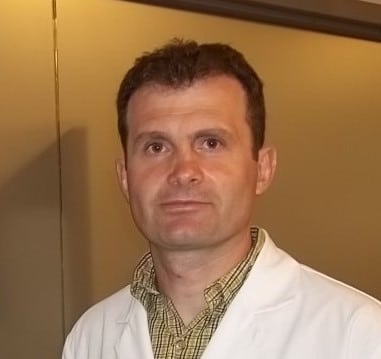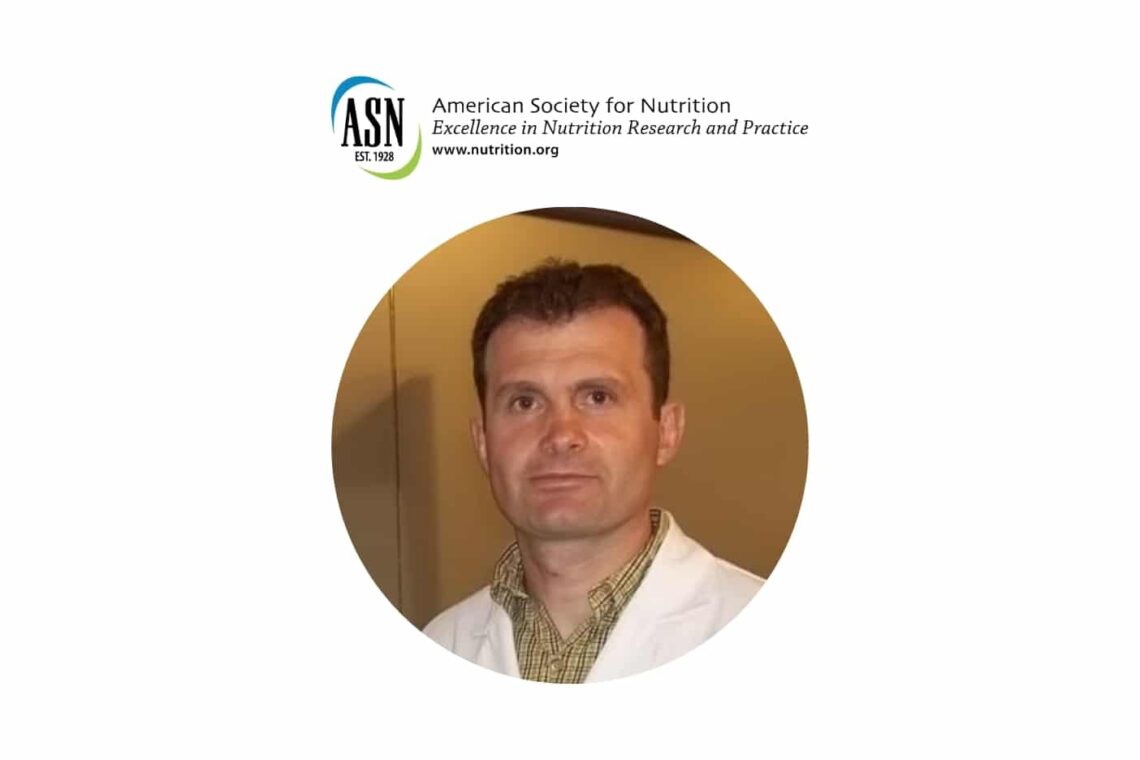The nutrition community is made up of individuals with diverse experiences, perspectives, and ideas. This diversity is the fundamental strength of our professional society. Through this member spotlight series, we celebrate our diversity and the vast achievements made by our members in the field.
Meet Dr. Christos Katsanos, Associate Professor at Arizona State University, Adjunct Faculty at Mayo Clinic in Arizona, and an ASN member for 18 years. In a conversation with ASN’s Member Engagement Coordinator, Sara Genell, he reflects on what sparked his interest in exercise physiology, the vital role nutrition science has played in his career, and his active involvement with ASN.
As 2024–25 Chair of the Energy and Macronutrient Metabolism (EMM) Research Interest Section, Dr. Katsanos helped lead the EMM GEM Forum Meeting the Nutritional Needs of Patients on Anti-Obesity Medications: What’s New? at NUTRITION 2025. He also shared his perspective as Guest Editor for the upcoming joint special issue of The Journal of Nutrition and The American Journal of Clinical Nutrition on Nutritional Considerations in the Era of Emerging Obesity Medications, highlighting the types of submissions he hopes to see.

Sara Genell: Thank you, Dr. Katsanos, for joining me today for this interview. For our readers who have not yet met you, can you please introduce yourself and share what sparked your interest in exercise physiology and macronutrient metabolism?
Dr. Christos Katsanos: Thank you, Sara, for this opportunity to speak directly to the ASN Membership Community. I am an Associate Professor at Arizona State University and an Adjunct Faculty at Mayo Clinic in Arizona. I have always been fascinated by the human body and its remarkable ability to adapt to exercise, which led me to focus my graduate training on exercise science. Alongside this, I have long been interested in how nutrition contributes to promoting health and preventing disease, and how exercise may impact nutrient metabolism. Thus, while my formal graduate work was in exercise physiology, nutrition has always been an integral part of my research, and for my doctoral work I studied postprandial metabolism of dietary fat in response to exercise.
Genell: As someone with formal training in exercise science, how did you hear about ASN and what led you to joining as a member?
Dr. Katsanos: I have been a member of ASN since 2007 and attended my first annual meeting, at the time as part of the Experimental Biology meetings, during my postdoctoral training. I had the opportunity to present my research on the role of amino acid supplementation in regulating protein metabolism in older adults. From that experience, ASN felt like a natural professional home, offering an ideal venue to present my research and engage with colleagues who share similar scientific interests.
Genell: We are so fortunate to have you heavily involved within the ASN Community. One avenue in particular is through your leadership as the Chair for the Energy and Macronutrient Metabolism (EMM) GEM. You served during the 2024-2025 term and are now past-chair. What inspired you to become further involved as EMM Gem Chair?
Dr. Katsanos: Over the years, I came to appreciate the importance of having a voice in shaping scientific agendas and supporting initiatives that advance our field. Serving as a GEM Chair provides an opportunity to do exactly that, while also strengthening connections with both established leaders and emerging scientists. It allows to further develop leadership, organizational, and communication skills that are essential in both academia and the broader scientific community. Given that ASN has been instrumental in my own professional growth, the GEM position offers a meaningful way to give back by contributing my time and expertise to help the Society continue to thrive.
Genell: Can you speak a little bit about the EMM Gem Forum: ‘Meeting the Nutritional Needs of Patients on Anti-Obesity Medications: What’s New? ‘ that you chaired at NUTRITION 2025? What do you think were the biggest takeaways for folks who may have missed this session?
Dr. Katsanos: This session was timely given how transformative the latest generation of obesity medications have been by producing unprecedented weight loss and significant improvements in health outcomes. However, one of the big gaps in the field is that we know surprisingly little about dietary intake, nutrient status, and optimal nutrition strategies for individuals on these medications.
The session discussed how to ensure long-term health benefit by integrating nutrition strategies we currently are familiar with, largely as part of other weight loss interventions, directly into this obesity pharmacotherapy. A highlight of the session was the overview of the recent multi-society advisory, “Nutritional Priorities to Support GLP-1 Therapy for Obesity”, which ASN co-endorsed, and which synthesizes current knowledge in the area of nutrition for patients on the new obesity medications.
One of the biggest takeaways was that there is an urgent need for evidence-based nutrition and lifestyle guidance tailored to patients on obesity medications. The consensus was that in order to maximize health outcomes, these treatments must be accompanied by well-structured nutrition strategies that address emerging challenges and ensure patients not only lose weight but also maintain muscle mass, bone health, and overall metabolic well-being.
At the Nutrition 2025 Conference there was a session on meeting the nutritional needs of patients on anti-obesity medications. View an overview video here featuring Guest Editor Christos S. Katsanos, PhD, along with Monica Agarwal, MD, MEHP, FACE.
Genell: In addition to your time dedicated to the EMM GEM, you are a guest editor of a joint special issue between The Journal of Nutrition and The American Journal of Clinical Nutrition on the topic of Nutrition Considerations in the Era of Emerging Obesity Medications. Can you share a little about the submissions you are hoping to receive?
Dr. Katsanos: This special issue is a natural extension of the EMM GEM forum held at NUTRITION 2025, highlighting the urgent need for evidence-based nutrition and lifestyle guidance for individuals using the new obesity medications. We invite authors to submit work that explores dietary patterns, assesses nutritional status, describes macro- and micronutrient metabolism and requirements, evaluates supplementation effectiveness, and outlines strategies to address emerging nutritional challenges and improve health outcomes in this patient population. Authors are encouraged to consider either of these journals as the best fit for their submissions.
Genell: What motivated you to help lead this joint special issue?
Dr. Katsanos: Besides aligning closely with my research interests, I was inspired to help lead this special issue because it addresses a critical and timely gap in literature. The use of new obesity medications is increasing rapidly, yet we still lack a comprehensive understanding of nutrition’s role in this modern era. I hope this issue will unite contributions from both basic science and clinical research, ultimately filling key knowledge gaps and advancing the field. By opening submissions to two of the society’s flagship journals, one focused on basic research and the other more on clinical studies, this special issue creates a platform that provides the opportunity to publish original and review articles spanning from bench to bedside.
Genell: Thank you for your insight into the special issue. I hope our readers feel motivated to submit their original or review work. To wrap up, can you leave some advice to our Early Career investigator readers who are looking to get more involved in ASN?
Dr. Katsanos: I would recommend them to start by attending and presenting at the ASN annual meeting. This is key to gain visibility, receive feedback, and expand your network. Join an ASN Interest Group that aligns with your research and professional goals, as it provides direct connections with colleagues and opens the door to leadership opportunities. And don’t forget to take advantage of ASN’s year-round resources, including webinars, and volunteering opportunities, to stay engaged beyond the annual meeting.






